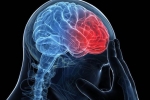Home »
Blog » Health and Wellness
| Stem Cell, PRP, Acupuncture in Queens & Long Island, New York
Health And Wellness | Stem Cell, PRP, Acupuncture in Queens & Long Island, New York
Your every day habits can play a role in developing chronic back pain. Here are a few simple things to keep in mind each day to reduce back pain. 1. Support Your Spine at Your Desk - Compared to standing, sitting places increased stress on your spine and spinal discs. So prolonged sitting with poor postures, such as slouching forward, may contribute to back pain.1 Here are a few tips to better support your lower back while you sit: Keep knees bent at about a 90-degree angle with feet flat on the ground. If needed, adjust your seat height so that your hips are about the same height as or slightly higher than your knees, which reduces stress on your lumbar spine.
Read more
De-Stress: Standing Forward Bend - If you feel anxious or stressed, a quick time-out can help. Try this simple yoga move. Stand straight, legs together. As you breathe in, raise your arms high over your head. Bend forward at your hips as you breathe out, keeping your upper body aligned. Grasp your calves or ankles. Breathe deeply and hold about a minute. Breathe in and slowly come back up, head and arms lose and relaxed, to standing.
Read more
Now that we are entering a new phase in the COVID-19 pandemic where access to vaccines is high, infection rates are declining, and there is greater access to health-related services, this might be a time to reevaluate your pain management plan and consider what changes can make a positive impact. Let’s start by taking a look at some of the ways the pandemic may have increased your pain problem:
Emotionally drained. Certainly, life during COVID-19 has been a source of intense stress.
Read more
In response to America’s opioid epidemic, physicians, pharmacists, and even insurance companies have been increasingly raising the bar on who can receive opioid medications in addition to how much and for how long. It’s not just the addiction risk that calls for caution when using opioids to treat chronic neck or back pain though long-term use of opioids may also worsen the pain.
Read more
Nonsteroidal anti-inflammatory drugs (NSAIDs) treat pain. They also relieve inflammation and reduce fevers. Over-the-counter NSAIDs include pills like aspirin, ibuprofen, and naproxen sodium, and creams you apply to your skin. Your doctor can also prescribe these pain relievers in a high-dose or more targeted version, like celecoxib (Celebrex) for arthritis.
Read more
Over the past year, the COVID-19 pandemic has forced me to change how I evaluate, treat, and interact with my patients. Maintaining all of the necessary safety measures have pushed me to find new ways to comfort and connect with patients even though I can’t hold their hand or share a smile through my mask. I know my patients have had to make adjustments as well; they’ve had to learn new ways to relate to me and to others on their health care team. But in spite of all of the new hurdles created by the virus, there do seem to be some lessons in all of this that will improve the doctor/patient relationship.
Read more
If you’ve been hobbled by pain, you’ll do almost anything to find relief, but perhaps not surgery if you can avoid it. While surgical solutions have come a long way, they certainly aren’t the only options available to you. Our pain management specialist understands that there’s no one-size-fits-all solution for pain. In an effort to provide our patients with options they can feel comfortable with, we offer the latest evidence-based, nonsurgical therapies available. Here's a look at five such therapies, which may be able to help you avoid surgery.
Read more
There’s much we still don’t entirely understand about cancer, but we do know that there’s an undeniable relationship between this disease and pain, though not in all cases. The fact is that there are more than 100 different types of cancer and not all of them cause pain. It can range from mild to severe when there is pain, but the good news is that there are avenues for relief. Here’s a look at why some cancers cause pain and what we can do to help you find relief.
Read more
The role of the human brain in chronic pain disorders and mental health issues is a complex riddle that medical researchers continue to study. In the meantime, we’ve been limited in how we can address problems like neuropathic pain and depression. But recently, a drug used as an analgesic for surgery has been showing great promise in solving some of these riddles. That drug is ketamine.
Read more
Headaches come in many different forms, from chronic migraines to a dull head after a late night out with friends. Of the dozens of different types of primary headaches, a few accounts for the majority of cases, and these are the ones that lead to missed workdays, never mind the missed time with family and friends. In fact, someone goes to the emergency room every 10 seconds in the United States complaining of head pain. Here’s a look at the more common headaches and how we can help you find relief from your head pain.
Read more
Love this Post? Spread the World






















